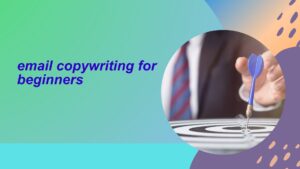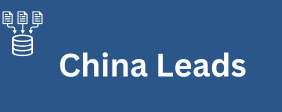Email Copywriting Do you want to write emails that people actually open and read? It’s not as hard as it sounds! This guide will show you the simple steps to create amazing emails. You’ll learn how to get your message across clearly. Soon, you’ll be writing emails like a pro.
Why Good Emails Matter Email Copywriting
Emails are powerful tools. They help you talk directly to people. You can share ideas or sell products. Good emails build strong connections. They also help businesses grow. Think about your favorite online stores. They likely send you emails. These emails keep you updated. They also offer special deals.
Understanding Your Audience
Before you write, think about who will read your email. What do they care about? What problems do they have? Knowing your audience helps a lot. It allows you to tailor your message. Imagine writing to a friend. You know their interests. This makes writing easier. The same idea applies to emails.
For example, if you are selling toys, your db to data might be parents. They care about safety and fun for their kids. Your email should talk about these things. If you are selling software, your audience might be business owners. They care about efficiency and saving money. Your email should highlight these benefits. Understanding your reader is the first step. It guides all your writing choices. Therefore, take time to think about them.

The Power of a Great Subject Line
The subject line is super important. It’s the first thing people see. It decides if they open your email. A good subject line makes people curious. It makes them want to know more. Keep it short and clear. Use exciting words. Ask a question sometimes. This can grab attention.
For instance, “New Arrivals!” is okay. However, “Your Next Favorite Outfit Just Arrived!” is better. It uses stronger words. It feels more personal. Try to make your subject lines unique. Avoid boring or generic phrases. People get many emails daily. Your subject line must stand out. Consequently, spend time crafting it carefully. This small part has a big impact.
Crafting Your Email Body
Once they open it, what’s next? The email body is where your main message lives. Start with a friendly greeting. Then, get straight to the point. People are busy. They don’t have time for long introductions. Use simple words. Avoid jargon or complex sentences.
Break up your text. Use short paragraphs. This makes reading easier. No one likes a big block of text. Use bullet points for lists. This helps highlight key information. It also makes your email scannable. People often skim emails first. Clear formatting helps them. It helps them find what they need quickly. Therefore, keep your paragraphs brief. Aim for one idea per paragraph.
Call to Action: What Do You Want Them to Do?
Every email needs a call to action (CTA). This tells people what to do next. Do you want them to visit your website? Do you want them to buy something? Make your CTA very clear. Use strong verbs. Put your CTA in a prominent place.
For instance, “Click here to learn more!” is a good CTA. Or “Shop now and get 20% off!” Make it easy to find. Use a button if you can. Buttons stand out more. A clear CTA guides your reader. It helps them take the next step. Without a CTA, your email might feel pointless. Consequently, always include one. Ensure it’s easy to spot.
Tips for Better Readability
Making your emails easy to read is key. Use a clear font. Choose a good font size. Avoid fancy, hard-to-read fonts. Use enough white space. This means space around text and images. White space makes your email look clean. It also makes it less overwhelming.
Check your spelling and grammar. Mistakes look unprofessional. They can make people distrust your message. Read your email aloud. This helps you catch awkward sentences. It helps you find errors too. Also, test your email on different devices. It should look good on phones and computers. Therefore, always proofread carefully. Pay attention to design too.
Consider adding images
Images can make your email more appealing. They can also explain things better. Choose images that fit your message. Make sure they are high quality. Don’t use too many images. Too many can slow down loading. They can also distract readers.
Use images to support your text. For example, if you are selling a product, show a picture of it. If you are announcing an event, use an image related to the event. Always use relevant images. Ensure they add value. Avoid generic stock photos. Original images are always better. They feel more authentic. People connect with them more.
Personalization: Making Emails Feel Special
People like feeling special. Use their name in the email. This is called personalization. “Hi, John!” feels better than “Hi there!” You can also tailor content. Show them things they might like. This is based on their past actions. For example, if they bought a certain product, suggest related items.
Personalization builds trust. It makes your email feel less like spam. It shows you care about them. Many email tools can do this easily. Learn how to use these features. It can greatly improve your email’s success. Remember, a personalized email is a powerful one. It makes your reader feel valued. Consequently, try to personalize your emails.
Test, Test, and Test Again!
Before sending your email, test it. Send it to yourself first. Check how it looks. Does everything work? Are the links clickable? Is the formatting correct? Test it on different email providers. Gmail, Outlook, and others can show emails differently.
Ask a friend to read it. They might spot errors you missed. They can give fresh eyes. This step is crucial. It prevents embarrassing mistakes. It ensures your email looks good for everyone. Testing helps you send a perfect email. Therefore, never skip this step. It’s an investment in your success.
Avoiding the Spam Folder
No one wants their email to go to spam. There are ways to avoid this. Don’t use too many capital letters. Avoid too many exclamation marks. These can look like spam. Don’t use spammy words either. Words like “free money” or “guarantee” can trigger filters.
Keep your email clean and legitimate. Only send to people who want your emails. This is very important. Always use a clear “unsubscribe” link. Make it easy for people to opt out. This builds trust. It also helps your sender reputation. A good reputation keeps you out of spam. Consequently, be mindful of spam triggers. Always maintain good email practices.
Measuring Your Success
How do you know if your emails are working? You track them! Look at open rates. This tells you how many people opened your email. Look at click-through rates. This tells you how many people clicked links. These numbers help you learn. They show what works well.
If open rates are low, perhaps your subject line needs work. If click rates are low, maybe your CTA isn’t clear. Use these insights to improve. Email marketing tools provide these statistics. Learn to read and understand them. They are your guide to better emails. Therefore, always analyze your results. This helps you grow and improve.
Consistency is Key
Don’t just send one email and stop. Be consistent. Send emails regularly. This keeps your audience engaged. It keeps you fresh in their minds. But don’t send too often. Too many emails can annoy people. They might unsubscribe. Find a good balance.
Perhaps once a week, or twice a month. This depends on your audience. It depends on your content too. A consistent schedule builds expectation. Your readers will look forward to your emails. Consistency also builds a strong relationship. Therefore, plan your email schedule. Stick to it as much as possible.
Image 2: A simple graphic showing a calendar with email icons on specific dates, representing consistency and scheduled sending.
A/B Testing: Try Different Things
Want to make your emails even better? Try A/B testing. This means you send two versions of an email. One version is “A” and the other is “B.” They are slightly different. Maybe you use a different subject line. Or a different image.
Send version A to half your audience. Send version B to the other half. See which one performs better. Which one got more opens? Which one got more clicks? This helps you learn what your audience likes. It helps you optimize your emails. A/B testing is a smart way to improve. Consequently, experiment with different elements. Learn from your results to refine your approach.
Building Your Email List
You need people to send emails to, right? So, how do you get them? Offer something valuable. Maybe a free guide, a discount, or exclusive content. People are more likely to give you their email for something in return. Make it easy to sign up. Put signup forms on your website.
Use clear language on your signup forms. Tell people what they will get. Tell them how often you’ll email. Be transparent. Never buy email lists. These lists often contain uninterested people. They can also harm your sender reputation. Build your list organically. This means people choose to join. This ensures they are genuinely interested. Therefore, focus on ethical list building. Offer real value to attract subscribers.
Automating Your Emails
Some emails can be sent automatically. These are called automated emails. For example, a welcome email when someone signs up. Or a birthday email with a special offer. These save you time. They also provide timely messages. Automated emails can build strong relationships.
They ensure no one falls through australia email list cracks. They make sure everyone gets important messages. Set them up once, and they work for you. Think about common customer journeys. Where could an automated email help? Welcome series, abandoned cart reminders, and post-purchase follow-ups are common examples. Consequently, explore email automation tools. They can significantly boost your efficiency.
Reviewing and Improving
Email copywriting is an ongoing the methods of torture most commonly process. After sending emails, review them. What worked well? What could be better? Keep a record of your successful emails. Learn from your less successful ones. Read articles about email marketing. Stay updated on new trends.
The world of email marketing changes. New technologies emerge. New best practices develop. Continuously learning will help you adapt. It will keep your emails fresh and effective. Remember, every email is a chance to learn. Every email is a chance to improve. Therefore, commit to continuous learning. Always seek ways to refine your email strategy.
